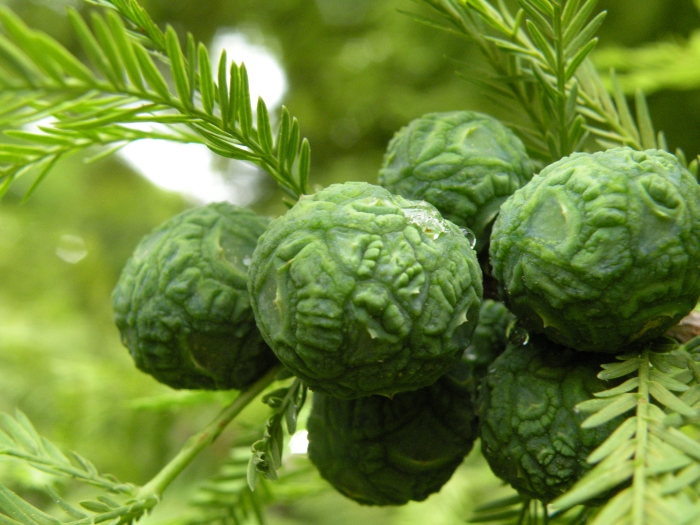Montezuma Bald Cypress
(Taxodium mucronatum)
Montezuma Bald Cypress (Taxodium mucronatum)
/
/

Cyril Nelson
Public Domain Mark 1.0



















































Estimated Native Range
Summary
Montezuma Bald Cypress is valued for its majestic stature and lush green canopy, which can provide dense shade. It is often used in large landscape settings, such as public parks and spacious gardens. This species is also planted along water bodies to stabilize banks and enhance riparian habitats. While it can tolerate medium amounts of water, it thrives in wet conditions and prefers full sun exposure. The tree is adaptable to a range of soil types, provided they have fast drainage. Despite its size, it is relatively easy to maintain once established. However, due to its potential size and root system, it should be planted with care to avoid conflicts with infrastructure.CC BY-SA 4.0
Plant Description
- Plant Type: Tree
- Height: 100-150 feet
- Width: 20-40 feet
- Growth Rate: Slow
- Flower Color: N/A
- Flowering Season: Non-Flowering
- Leaf Retention: Evergreen, Semi-Deciduous
Growth Requirements
- Sun: Full Sun
- Water: Medium
- Drainage: Fast
Common Uses
Bird Garden, Butterfly Garden, Deer Resistant, Drought Tolerant, Erosion Control, Fire Resistant, Low Maintenance, Rock Garden, Salt Tolerant, Water Garden
Natural Habitat
Native to riparian areas, lakesides, and wetlands in Mexico and Texas
Other Names
Common Names: Montezuma Cypress, Montezuma Bald-Cypress, Montezuma-Cypress, Mexican Cypress, Montezuma Baldcypress, Mexikanische Zumpfzypresse, Mexikanische Zypresse, Bochil, Camphoreta, Cedro Bastardo
Scientific Names: , Taxodium mucronatum, Taxodium huegelii, Taxodium distichum var. mexicanum, Taxodium mexicanum, Taxodium distichum var. mucronatum, Taxodium montezumae, Cuprespinnata mexicana, Cupressepinnata mexicana, Taxodium distichum subsp. mexicanum
GBIF Accepted Name: Taxodium mucronatum Ten.